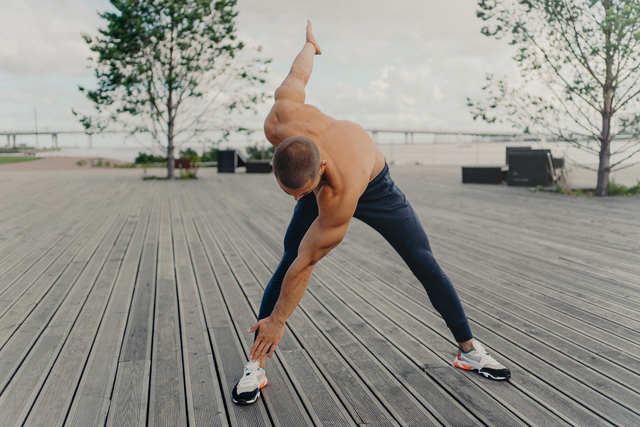The Importance of a Proper Warm-Up and Cool-Down in Swimming

In the world of competitive swimming, every detail matters. Success is not solely determined by talent or the countless hours spent in the pool, but also by the often-overlooked aspects of the sport. Among these, the importance of a proper warm-up and cool-down cannot be overstated.
The Purpose of a Warm-Up
The purpose of a warm-up in swimming, as in any sport, is to prepare the body for the physical exertion that lies ahead. It involves a series of exercises and stretches designed to increase the body's core temperature, improve flexibility, and stimulate the cardiovascular system. By gradually increasing heart rate and blood flow, warm-ups aid in delivering oxygen and nutrients to the muscles, thereby enhancing performance and reducing the risk of injury.
Warm-ups should be specific to the activity ahead. Swimmers should focus on movements that engage the same muscle groups and energy systems used during swimming. A combination of dynamic stretches, swimming drills, and light aerobic activity can constitute an effective warm-up.
The Importance of a Warm-Up
The first benefit of a proper warm-up is injury prevention. Cold, tight muscles are more prone to injuries such as strains and sprains. Warming up increases the muscles' temperature, making them more pliable and able to better absorb the stress and strain of vigorous swimming.
Secondly, warm-ups prime the cardiovascular system for the upcoming activity, reducing the initial shock of jumping into a high-intensity swim. This preparation can enhance performance by ensuring the body is ready to efficiently use oxygen and generate energy.
Finally, warm-ups also have a psychological component. They provide a transition period from the rest of the day's activities to the focused mindset needed for training or competition. This mental switch can be as crucial as the physical aspects in achieving optimal performance.
The Purpose of a Cool-Down
Cool-downs, like warm-ups, play a critical role in a swimmer's routine. They allow the body to gradually return to its resting state after vigorous activity. Cool-downs involve low-intensity swimming and stretching, assisting the body in flushing out waste products accumulated during exercise, such as lactic acid.
The Importance of a Cool-Down
One of the primary benefits of cool-downs is the prevention of blood pooling. When intense activity stops abruptly, the heart continues to pump large amounts of blood to the muscles, but without the aiding effect of the muscular pump action in the legs. This imbalance can cause blood to pool in the lower extremities, leading to dizziness or even fainting. A gradual cool-down helps maintain the blood flow back to the heart and brain, preventing these issues.
Cool-downs also aid in recovery. By promoting the removal of waste products from the muscles and delivering fresh oxygen and nutrients, they can reduce muscle soreness and speed up the recovery process. This faster recovery is vital in a competitive environment, where multiple races may occur in a short period.
Lastly, cool-downs contribute to the overall health and longevity of athletes. The body undergoes significant stress during high-intensity exercise. By allowing it to return to its resting state gradually, cool-downs help prevent chronic injuries and health issues over time.
Building an Effective Warm-Up and Cool-Down Routine
A well-designed warm-up should start with light aerobic activity, such as easy swimming or jogging for 5-10 minutes, to raise the body's core temperature. Following this, dynamic stretches that mimic swimming movements can help engage the necessary muscle groups. Lastly, incorporating specific swimming drills can help fine-tune technique and prepare for race conditions.
A cool-down can begin with 5-10 minutes of low-intensity swimming, gradually decreasing in speed. This active recovery helps flush out lactic acid and other waste products from the muscles. After this, static stretching can help maintain and improve overall flexibility. It's important to focus on all major muscle groups used during swimming, including the shoulders, back, chest, hips, and legs.
Swimmers should spend at least 20 minutes on their warm-up routine and 10-15 minutes on their cool-down routine. However, these times can vary depending on the intensity of the workout or competition, as well as individual needs and preferences.
Understanding Individual Differences
Just as no two swimmers have the same stroke, no two warm-up or cool-down routines should be identical. Factors such as age, fitness level, swimming style, and personal preference should influence the routine's design. For instance, older or less fit individuals may require longer warm-ups and cool-downs, while sprinters might focus more on explosive, fast-twitch muscle preparation.
It's also essential to listen to your body. If your muscles feel particularly tight one day, you may need to spend extra time on dynamic stretches during your warm-up. Similarly, if you're feeling exceptionally fatigued after a workout, you might benefit from a longer cool-down.
The importance of a proper warm-up and cool-down in competitive swimming is often overshadowed by the focus on swimming technique and endurance. However, these routines are vital for enhancing performance, preventing injuries, and promoting recovery.
By understanding the purpose of these practices and tailoring them to individual needs, swimmers can not only excel in their races but also enjoy a long, healthy swimming career. The key is to respect these routines as integral parts of the training and competition process, rather than optional extras. By doing so, swimmers can maximize their potential and truly make every stroke count.